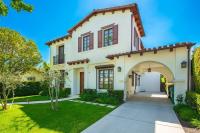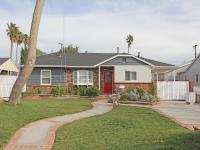USA: one-in-five Americans live in multigenerational households Benefits and drawbacks of multigenerational living According to a report released by the Mortgage Bankers Association, over 64 million Americans – which means one-in-five Americans – live in multigenerational households. T ...
USA: one-in-five Americans live in multigenerational households
USA: one-in-five Americans live in multigenerational households
Benefits and drawbacks of multigenerational living
According to a report released by the Mortgage Bankers Association, over 64 million Americans – which means one-in-five Americans – live in multigenerational households.
The labour market in the US remains robust. More people are brought into the workforce, the availability of higher wages is encouraging consumer spending and boosting business investment; nevertheless, the number of Americans living in multigenerational family households – including two or more adult generations or grandparents and grandchildren younger than 25 – has been on the rise among nearly all U.S. racial, age and gender groups.
This housing trend started during the Great Recession of 2007-2009, but it endures despite the downturn has been overcome and the economic recovery has made it more feasible for people to live on their own.
The rise in multigenerational living can be explained by the growing racial and ethnic diversity in the U.S. population. The Asian and Hispanic population, along with foreign born Americans are more likely to live in multigenerational family households than those born in the U.S.
The Mortgage Bankers Association reported that household formation declined in the U.S. during the recession; however, the homeownership rate begun to rise again in 2014 and the number of new households is forecasted to increase to 16 million by 2024.
According to the PEW report, in recent years, young adults have been the age group most likely to live in multigenerational homes due to later marriages and high unemployment that pushed younger people to go back home to live with their parents. Education levels make a difference, too. Young adults with a college degree are more likely to go and live with a spouse or partner in their own homes. Hawaii, California, Texas, Mississippi, New York , Arizona, Maryland, Georgia, New Jersey, Florida, Nevada, New Mexico, Virginia and Louisiana are the states with the highest percentages of multigenerational households.
Of course, living in a multigenerational home can bring some benefits, above all economically-speaking. Intergenerational collaboration allows sharing important services: older family members can provide child care, while younger adults can take care of their elderly relatives; travel costs for visits are reduced as well and financial responsibilities are shared between older and younger generations. One of the main drawbacks, instead, is the loss of privacy. Some states, like California, are promoting changes in building to create accessory structures or studios – the so-called “granny flats” – to allow family members to live close to one-another while protecting their own privacy.
Main source: PEW Research Center Analysis of Census Data
Read also: * Hawaii the paradise of foreign buyers *
The best cities for first-time homebuyers in the USA *
American-real estate market trend *
Real estate in California west coast is cool but still hot *
New York: Good neighbor next door, homes at half-price
Real also:
Untouchable Dublin: prices continue to rise
Valley of the Temples, Syracuse and Ragusa: Sicily Bedda
'Revive' program for Portugal: when history merges with construction
Smart buildings with zero energy: Italy ready for the challenge
USA: one-in-five Americans live in multigenerational households
Related Insights
-
USA: one-in-five Americans live in multigenerational households
Real Estate Listings
For sale House, California, Los Angeles County, Beverly Hills, 147 N Stanley Dr., Beverly Hills, Ca 90211

For sale
House
379.88 m²
For sale Villa, California, Los Angeles County, Beverly Hills, 147 N Stanley Dr, Beverly Hills, CA 90211

For sale
Villa
379.88 m²
For sale 5+ Bedrooms, California, Los Angeles County, West Hollywood, 395 Hunltely drive

For sale
5+ Bedrooms
403.57 m²
For sale Development Property, California, Kern County, Tehachapi, 19828 Mesa Drive Tehachapi, Ca 93561

For sale
Development Property
1416.4 m²
For sale Villa, California, Los Angeles County, Hollywood Hills, 7431 Franklin Ave Los Angeles, CA 90046

For sale
Villa
380.9 m²
For sale Business, California, Los Angeles County, Los Angeles, will av 635

For sale
Business
65 m²
For sale 3 Bedrooms, California, Los Angeles County, Los Angeles, 7816 Genesta Ave, Los Angeles, CA 91406

For sale
3 Bedrooms
0.09 m²
For sale Other (Residential), California, Riverside County, Lake Elsinore, 33040 Churchill Street

For sale
Other (Residential)
80.27 m²
For sale 2 Bedrooms, California, Fresno County, san jose, 333 Santana Row

For sale
2 Bedrooms
174.75 m²
For sale Farmland, California, Alpine County, California City, The corner of Tulane Street and Houlihan Avenue

For sale
Farmland
81.59 m²

 Free real estate ads
Free real estate ads